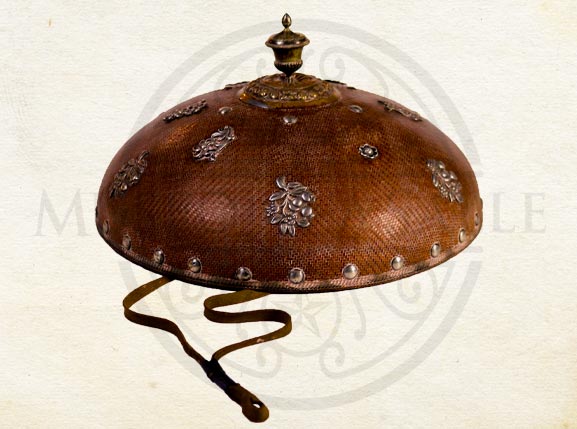- Visit us |
- Virtual Tour |
- VCM

The salakot is a traditional headgear that existed during Pre-Colonial Philippines. The Tagalog and Kapampangan peoples of the Philippines were known to have worn these headgears, though many other helmet variants are found throughout the islands. These headgears are made from locally sourced materials such as bamboo, palms, and rattan leaves. These are coated in resin to make them waterproof and were worn by the farmers and fishermen as protection against the sun and rain.
In the Spanish Colonial period, the salakot evolved into a status symbol, mostly worn by the principalia class, who served as the intermediaries for the native population and the colonizers. It was during this period that the salakot underwent a design change and began incorporating materials such as tortoise shells, precious gems and even metals (i.e. silver). The social standing of a member of the principalia class can be distinguished by how lavishly decorated their salakot is. It would not be until many more years later that the Filipinos would use this headgear as a symbol of the revolution.
This item is part of Museo de La Salle’s Santos Joven Panlilio collection which boasts of antique turn-of the-century furniture and decorative furnishings from the family’s ancestral home in Bacolor, Pampanga. Some pieces were collected through the years by art connoisseur, antique collector and interior designer Jose Ma. Ricardo Panlilio, the museum’s founding director.
JRP